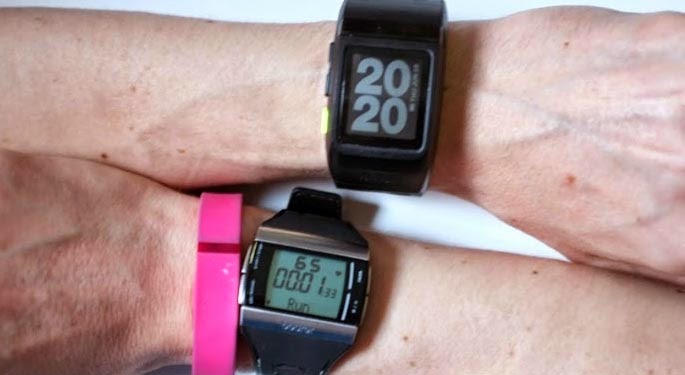While I think we can find out many interesting patterns by recording our data, one danger is that the data itself (or parts of the data) becomes more important than the activity we're looking to track.
It's something I'm coming to terms with respect to my use of my Beurer heartrate monitor.
When I first used it, I was surprised to see that my peak heart rate - during a game of hockey - was recorded as 196 beats per minutes.
As we all know, the rule of thumb is that your maximum bpm is 220-your age. Believe me, I'm not 24 - not even close. Of course, such rules are just an average. There are plenty of known limitations.
The first time I used the monitor, it was a hot day, and I knew I'd worked hard during the game. But as I've used the monitor in various games since - hockey and football - I've recorded similar peaks. And the monitor seems to be working fine, because during 5 and 10 km runs, it's recording much lower peaks of around 180 bpm.
Yet now when I play sports, I'm increasingly noticing that I'm viewing my performance on my peak bpm, rather than my average bpm; a more useful longterm measure and something that the watch also records.
So I think it's time to stop using a heart rate monitor for team sports games. Maybe I'll have another look at Adidas miCoach - something I've already used with some success for hockey and football, despite the hardware's lack of mechanical robustness. Hopefully that's something which has been improved since version 1.0.
It's something I'm coming to terms with respect to my use of my Beurer heartrate monitor.
When I first used it, I was surprised to see that my peak heart rate - during a game of hockey - was recorded as 196 beats per minutes.
As we all know, the rule of thumb is that your maximum bpm is 220-your age. Believe me, I'm not 24 - not even close. Of course, such rules are just an average. There are plenty of known limitations.
The first time I used the monitor, it was a hot day, and I knew I'd worked hard during the game. But as I've used the monitor in various games since - hockey and football - I've recorded similar peaks. And the monitor seems to be working fine, because during 5 and 10 km runs, it's recording much lower peaks of around 180 bpm.
Yet now when I play sports, I'm increasingly noticing that I'm viewing my performance on my peak bpm, rather than my average bpm; a more useful longterm measure and something that the watch also records.
So I think it's time to stop using a heart rate monitor for team sports games. Maybe I'll have another look at Adidas miCoach - something I've already used with some success for hockey and football, despite the hardware's lack of mechanical robustness. Hopefully that's something which has been improved since version 1.0.

No comments:
Post a Comment